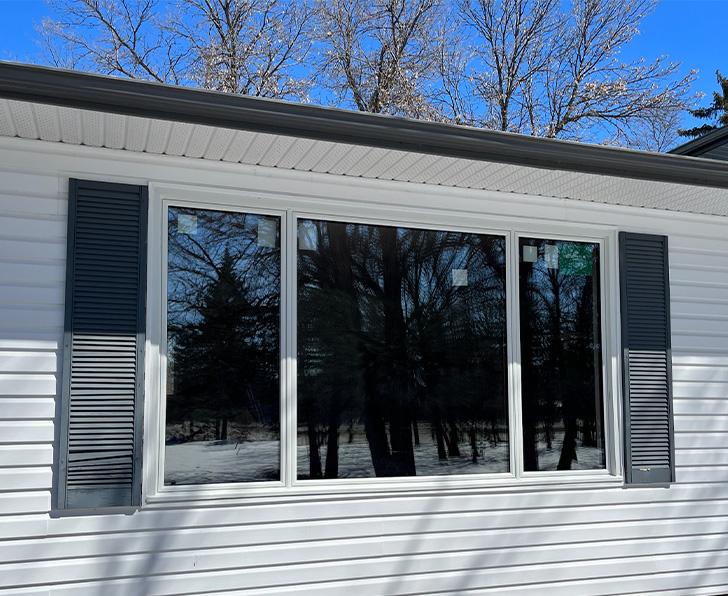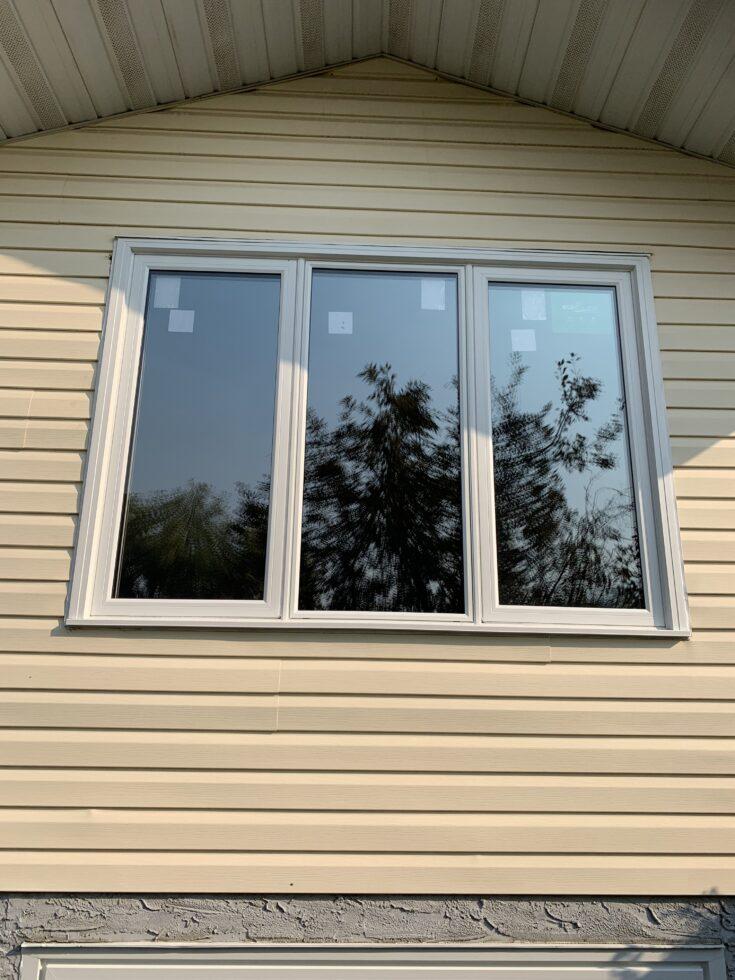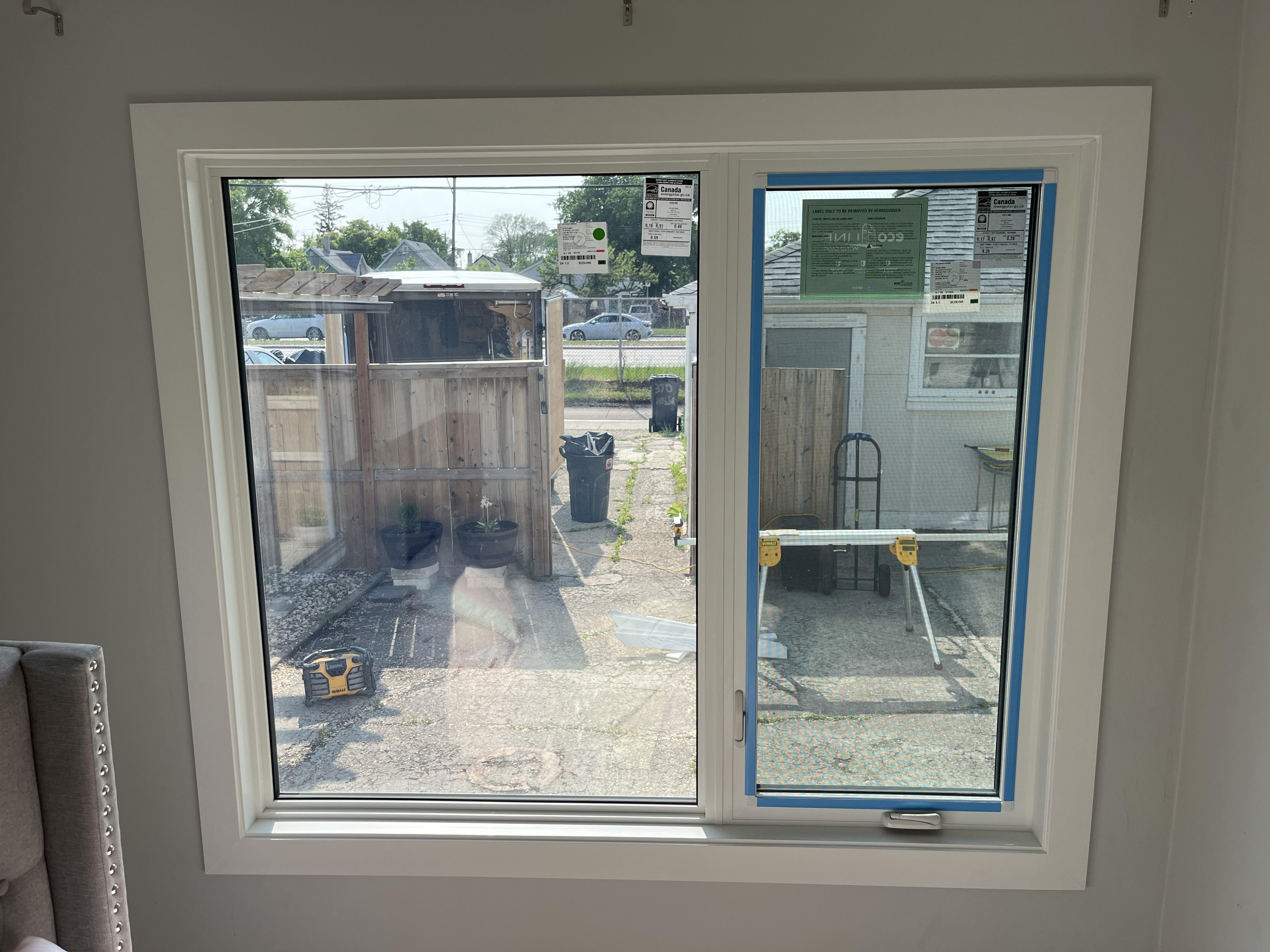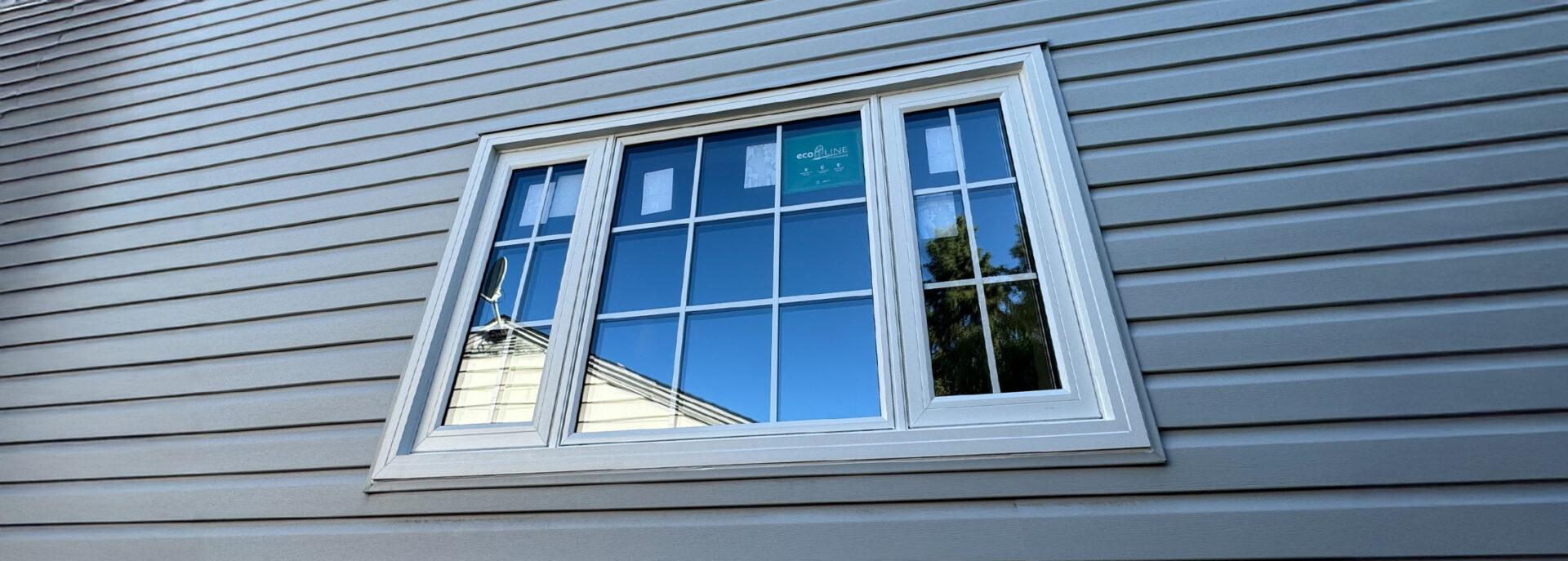

A Complete Guide to Casement Windows: All You Need to Know in 2025
Jan 20, 2025
27 min read
3006
Looking for excellent casement windows for your home? Do you want to install the ones that are easy to open and close? Casement windows might be the perfect option for your needs. They hinge at the side and could be opened outward to the left or right.
They are also called crank windows since they are opened with a handle that cranks the window’s supporting arm outward. Eager to know more? Continue reading this ultimate guide to casement windows and find all the answers!
What Are Casement Windows?
A casement window is a type of window that opens outward on hinges, like a door. Built to fit most any architectural style, modern casements are typically vertical crank out windows and use classic side-hinged models that swing open manually or with a crank.
While 18th-century glass manufacturing was limited to producing only small pieces of window glass that had to be attached with lead strips, today’s casement styles exhibit unencumbered visibility and optimal airflow.
How we manufacture casement windows at Ecoline
Different companies supply different products. But here, at Ecoline Windows, we offer some of the highest performance casement windows on the Canadian market. All our windows are ENERGY STAR rated and NAFS tested, so you know that you are getting a quality product.
Our windows can be manufactured for any climate in Canada, so your home feels comfortable in the coldest winters and hottest summers.
Sizes and shapes
Casement windows are often used in areas where the height is greater than the width. They come in various sizes and arrangements. They are either fixed (not operable) or hinged on the right or left to open out.
Single-unit (one-lite) standard widths range from 1′5″ to 3′0″ and are configured in 2-wide, 3-wide, 4-wide, and 5-wide styles mulled together for superior ventilation and unobstructed view. Standard and custom sizes can be combined with equal-sized sashes, larger fixed centre sash with operable flanking windows, stacked with a transom window on top, or any number of other arrangements.
Note that this type of windows goes with only vertical installation. No horizontal casement window is applicable.
Casement Windows Installation: Energy-Efficiency Matters
So you want to get the casement windows, but here comes the question, what type of pane should you get, double or triple? Well, it all depends on your climate zone and your needs, but here is a brief explanation of how both types of windows can help you.
Double-pane vs. triple casement windows
Compared to double-pane units, triple-pane windows allow less heat to escape and have less condensation. However, another benefit of triple pane windows over double is that the extra pane allows for the utilization of additional Low-E coatings.
To an untrained eye, low-emissivity coatings look like a window tint or film. In reality, though, the coating is applied during the manufacturing of the glass at a molecular level. Pretty much all windows assembled in Canada today utilize low-emissivity coatings to improve the performance and efficiency of the window. This applies to both double and triple pane windows.
Double-pane windows have an R-value ranging from 3 to 3.8, while triple-pane windows have an R-value of up to 7- 8, making them more effective at blocking heat flow. This means that replacing double-paned units with triple-paned windows reduces heating costs.
As a comparison, an Energy Star–rated window with double panes with an R-value of 3 when increasing the R-value from 3 to 5, the average heat loss through the window is reduced by 30% to 40% percent. Designed for new construction and replacement projects, triple paned windows can achieve an R-value as high as 8 depending on window types and glass packages. This explains in part why triple-glazed products can be up to 50% more efficient than double-glazed.
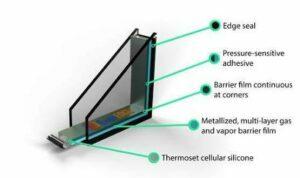

Casement Window Configurations or Styles
In fact, casement windows are not divided into many types, configurations or style. When installing new casement windows you can either opt for operable or fixed casement models to match your home needs for ventilation and energy-efficiency.
- Operable Casement. An operable casement window is hinged on the side and opens outward (left or right, depending on preference) with a crank handle. It is designed with a lot of glass area to provide an unobstructed view. It also offers great ventilation and easy cleaning.
- Fixed Casement. This type of casement window is stationary and can’t be opened. It provides maximum energy efficiency due to tight seal and allows for amazing views outside.
- Casement-Fixed-Casement. You can also go with a combination of two casement windows side by side to get both operable and stationary window. The operable casement can open right or left, depending on preference, while another window remains fixed and ensures maximum insulation.
Frame Materials and Finishes
While oak frames were the norm for vintage-era designs, they were bulky and offered limited colour selections. By the end of the 19th century, manufacturers began offering different framing materials to improve aesthetics and provide a choice of finishes. While the new materials required painting, homeowners could select distinctive hues to match their architectural style. Modern framing materials include:
- Wood—although susceptible to decay, it is still a popular choice for its natural beauty. Wood frames are available unfinished, primed or pre-painted to match the exterior decor and colours. This material is very strong and durable. It has minimal condensation as wood has a low heat and cold transfer. Wood is also more expensive than other materials.
- Clad/Combination—wood frames bonded with extruded aluminum, vinyl or fiberglass. This frame (with any type of cladding) reduces maintenance and increases durability. It’s very weather-resistant and can include energy-efficient glazing options. The exterior finish comes in a variety of colour coatings while the wood interior can be stained or painted. Unsealed edges may allow moisture under the cladding and contribute to rotting, mold or mildew.
- Vinyl—offers a low-cost, high-performance alternative to wood. New manufacturing techniques have improved the look and quality of these window frames. Vinyl casement windows are very energy efficient and can be insulated with foam fills inside the frame. It is both non-corroding and UV-resistant so its finish can be preserved. Many manufacturers are now adding to their colour line for both interior and exterior customizing. Woodgrain options are offered for a classic interior wood look without the maintenance.
- Aluminum—the strongest and most durable of all window materials. Similar to vinyl, aluminum frames are a low-cost, low-maintenance option. It is usually insulated to stop moisture build-up and insulated to prevent heat loss.
- Fiberglass—is more expensive than vinyl windows, fiberglass is gaining in popularity because of its real-wood look without the maintenance. Made from glass fibers and resin, it can be painted to match the exterior decor, is rot-resistant, is extremely strong, and is an excellent insulator.
Colours
While traditional white casement windows are most often installed by homeowners across Canada, painted models in fact add more value and aesthetics with the black casement windows being amazingly popular today.
With Ecoline’s large selection of exterior standard, paint-to-order, and interior colour matching program, the possibilities are endless for coordinating window colours with the home’s decor.
Choose from Slate, Sandalwood, Sable, Pebble, Iron Ore, Forest Green, Dover Gray, Cream LG, Commercial Brown, Chestnut Brown, Cashmere or Black for your casement windows.
Casement Windows vs. Other Types of Windows
Okay, you got plenty of information about casement windows, but still, there are many other types of windows on the market. Now, you might be curious whether a casement option is really something you need and how these windows over perform other windows you might come across while doing your market research. Let’s find out.
Casement vs awning: what is the difference?
The benefits of awning windows are numerous. Its crank out design makes it the perfect solution for hard to reach places like over the kitchen sink and allows for effortless opening and closing. Opening to the outside lets the awning catch breezes and, as a result, provide better ventilation. Awning windows provide maximum efficiency and comfort in any room they are put in.
However, the awning does not have the same size range as the sash simply becomes too heavy as the window gets bigger. If you are really intent on having awning windows, the solution is to make it a combination unit with either another awning or a fixed window. This option will take advantage of all of the benefits of the awning while overcoming its size limitation.
Unlike the awning, the casement can be positioned strategically so that even a 2 to 3-inch opening would act like a sail on a boat and direct the breeze inside. Another benefit of casement windows vs awning is that they are generally hard to break into.
Finally, what sets the casement apart from the awning for most people is that the exterior glass can be cleaned from the inside.
Casement or double hung?
The overwhelming benefit of a double hung window is its ability to provide ventilation to a room. It can open from the top and thus provides extra security in kid’s rooms and keeps in-home offices organized by keeping the breeze at the top of the room.
These windows are a good choice for meeting egress requirements. They are easy to operate with minimum effort and can be cleaned from the inside by tilting the sash to the inside.
Are casement windows better than sliders?
Sliders are best for openings that are wider than they are tall. In fact, the slider may very well be the best-suited window for wide openings, as it provides the most unobstructed view while allowing for maximum ventilation. The width of the opening is also not a great concern for the slider, as it can even be adjusted for large openings by adjusting to an end vent configuration.
However, with all the pros of this type of window, it really is not that good when it comes to energy efficiency. While it meets industry standards for water and wind resistance and is Energy Star rated, it is simply no match to the compression seal of a casement window.
French casement windows
Just like regular casement windows, French casement windows make a great addition to your home. They are made up of two casement windows side by side that open out from the center and are not equipped with a vertical post between windows.
Traditional casement windows is a single window, which can be opened using a hand crank, and fits within a sash. But if you have two traditional casements neighbouring, you are to open them each separately, and you would see the vertical posts dividing each window from its neighbour. It makes an obstructed view.
With French casements, you are to simply push to open both windows simultaneously and have a clear view outside. What makes these windows stand out is an excellent variety of designs and great ventilation compared to other types of windows.
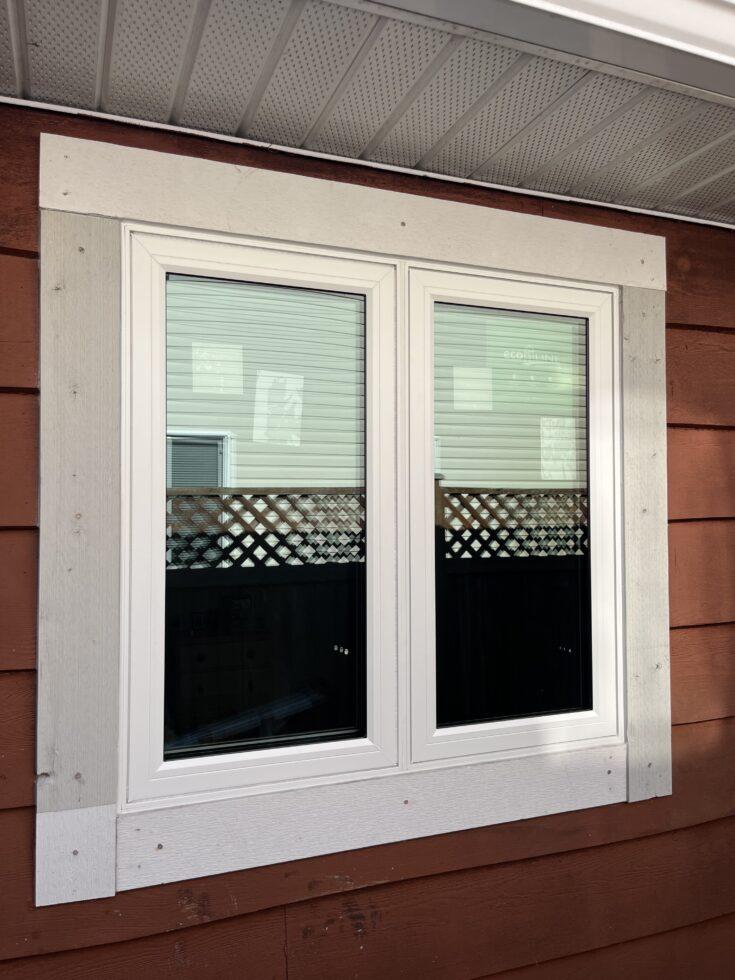
Casement Windows Drawbacks
With all that being said, it is time to mention some of the few issues related specifically to casement windows. While they are good at energy efficiency, easy to clean and have a lot of great benefits, here come the main drawbacks.
- Standard air conditioning units will not fit. It will be necessary to purchase a special unit that costs twice as much as a double-hung model.
- Hardware can be difficult to operate and susceptible to breakage.
- Casement windows open out, so the sash edges are exposed to all weather conditions. They may lead to faster deterioration.
- If left open during strong winds can over-extend or break the window.
- It can be difficult to get larger windows with more glass area.
In case you are eager to know more about different types of windows, and how we compare and rate them, please look here for more information.
How much do casement windows cost?
Casement windows are probably the best offer you can come across when making your market research. In addition, they are also the most energy efficient and practical to use.
Take a look at the table below to find out the prices depending on the location within your home in comparison with other types of windows.
| Location | CASEMENT | AWNING | SINGLE SLIDER – TILT | SINGLE HUNG | FIXED CASEMENT(Fixed) | PICTURE | PATIO DOOR |
| Basement | $535 – $1,022 | $471 – $1,114 | $394 – $1,057 | n\a | $395 – $1,651 | $315 – $1,518 | n\a |
| Bathroom | $446 – $1,032 | $432 – $943 | $394 – $1,033 | $95 – $1,500 | $542 – $643 | $388 – $1,242 | n\a |
| Bedroom | $444 – $1,193 | $893 – $909 | $437 – $1,521 | $587 – $2,115 | $668 – $1,230 | $226 – $2,324 | $1,747 – $2,882 |
| Bonus room | $676 – $1,134 | $494 – $944 | $820 – $1,248 | $634 – $1,374 | $708 – $1,116 | $420 – $2,305 | n\a |
| Dining room | $550 – $1,348 | $843 – $1,429 | $669 – $1,957 | $529 – $1,466 | $690 – $905 | $316 – $2,072 | $1,600 – $3,879 |
| Family room | $605 – $1,999 | $621 – $1,157 | $490 – $1,131 | $569 – $1,155 | $672 – $1,986 | $354 – $2,661 | $1,631 – $3,032 |
| Foyer | $858 – $1,999 | n\a | $465 – $778 | $500 – $854 | $607 – $2,097 | $338 – $1,552 | n\a |
| Front | $583 – $1,014 | $483 – $1,414 | $785 – $968 | $510 – $925 | n\a | $359 – $2,933 | n\a |
| Garage | n\a | $703 – $902 | $391 – $1,085 | $588 – $732 | n\a | $334 – $1,536 | n\a |
| Kitchen | $329 – $1,356 | $419 – $1,471 | $394 – $1,595 | $445 – $1,595 | $234 – $1,741 | $202 – $2,179 | $1,681 – $2,862 |
| Living room | $484 – $1,614 | $485 – $1,384 | $433 – $2,327 | $429 – $1,614 | $406 – $2,766 | $226 – $2,898 | $1,640 – $4,427 |
| Master bedroom | $545 – $1,304 | $588 – $1,120 | $452 – $1,810 | n\a | $464 – $1,030 | $335 – $2,370 | $1,568 – $3,437 |
| Nook | $549 – $1,149 | $734 – $920 | $658 – $1,142 | $473 – $1,186 | $668 – $777 | $337 – $2,440 | $1,395 – $3,083 |
Casement windows pricing by location
This table elaborates on casement windows prices considering your area of living.
| City | Price |
| Calgary | $328 – $1,998 |
| Ottawa | $523 – $953 |
| Edmonton | $431 – $1,304 |
| Regina | $554 -$1,111 |
| Winnipeg | $477 – $1,614 |
| Saskatoon | $407 – $1,196 |
| Vancouver | $444 – $2,116 |
Casement Window Parts Explained
In this section, we will speak about how the casement window is made, its essential parts (hardware), energy efficiency and other benefits you get when installing this type of window.
Hardware
Just like every window, casement windows have a few standard parts:
- Window frame – the outer edge is attached to a wall.
- Casing – a decorative part that covers the space between the window frame and the wall.
- The sash – window’s movable part that holds window panes
- Crank handle – used to open the window. There are no casement windows without crank.
- Hinges – they enable the window to open and are attached on one side of the sash
- Latches – some windows contain these parts that secure the closed window and prevent its uncontrolled opening
- Stays – these parts support the window when it is wide open and stop it from damaging during windy days.
Casement window swing direction
If you are eager to know which way should casement windows open, here comes the answer. It is simple. These windows can have both opening direction – from left to right or vice versa. Everything depends on your preferences and home design. Just keep in mind that these windows can only be installed vertically.
Modern Casement Windows: Energy Ratings
From 2020, there is no need to reference a Climate zone when determining whether a window is ENERGY STAR certified for your area. Due to updated guidelines there is just one single standard. A product is ENERGY STAR certified in Canada – or it isn’t. This change will make it easier for Canadians to choose energy-efficient windows for their homes. As such, to be considered efficient, casement windows must have a ER of 34 and higher.

ER Ratings are a number given to windows, based on a calculation of different performance factors. These include things like the U-Factor and Solar Heat Gain Coefficient. The ER rating has been created specifically to make it easier for consumers to understand and compare window performance across different manufacturers.
- U-Factor is a calculation of how conductive a window is, how it is affected by convection heat loss and the emissivity of the glass in the panes. At the very basic level, the lower the U-factor, the better your window is at keeping heat inside.
- SHGC: The Solar Heat Gain Coefficient is a measure of how much heat from the sun a window gains. Although ideally you want as much heat from the sun in the winter months, most modern windows with high SHGC end up overheating the home. High SHGC factors are great for windows that see very little direct sunlight and can maximize energy gains in those places. The lower SHGC, the less heat from the sun your windows let through.
Safety
If safety is a concern from falls or break-ins, tempered glass is the perfect choice. It is stronger and more impact-resistant than standard window glass for better peace of mind. Casement window designs close tight to provide a weatherproof seal that’s inaccessible from outside for improved security.
In areas where you want to keep people from looking into your home, such as in bedrooms and bathrooms, you can choose opaque etched or frosted glass to allow light to enter without compromising privacy.
Screens are installed on the interior side of the frame. New materials provide improved visibility, better ventilation and insect protection than standard products.
Security
When it comes to security, you should know that it is quite hard to break into casement windows because of the next essential features:
- Its frame is tightly sealed when it’s closed and latched
- These windows can only be opened from the inside
- The only natural way someone could get into your home is to break the glass from the outside and open the window with the use of a crank, making a lot of noise caused by breaking the glass.
Casement Window Installation: How To Do it The Right Way
High quality windows deserve professional installation. Windows installers should be experienced, bonded and ensure they work in accordance with CSA window installation standards approved by the Government of Canada.

How To Measure a Casement Window?
It is vital to focus on the importance of a proper measurement when ordering products from Canadian window manufacturers. It is generally accepted that the installer who performs the installation is also the person who does the measurement. A knowledgeable installer should be able to foresee any unexpected circumstances and extra labour that may be involved with the installation. Although they should be able to answer any questions, you should still have a basic understanding of how to properly measure a window.
- To ensure the window is square, it is important to first measure it diagonally in both directions. If the two dimensions are equal, the opening is square, otherwise, the size of a new window will need to be adjusted accordingly.
- It is important to check that the window is level and free from distortion or warping. Measure horizontally at the top, middle, and bottom. The largest measurement will be the new window’s width.
- To calculate the height, measure vertically at the left side, centre, and right side of the window. As with the horizontal measurement, the largest dimension will be the height of the new window.
- To ensure an adequate opening for the new window add at least a half inch to the width and height measurements. This allows for a quarter inch opening on all sides of the window for shims, insulation, and thermal expansion.
- If a brickmould is to be used, appropriate measurements will need to be done on the outside of the window as well, leaving a quarter of an inch of space for the brickmould to fit. Compare the brickmould size with the window measurement to ensure adequate space for shimming and foaming.
How to remove casement window?
It is recommended not to remove the old windows until the new ones arrive and you’ve checked for fit. When outside, pry off the old trim. Using a reciprocating saw and a demolition blade, cut between the rough frame and the old window frame.
Lift the old window out — bringing it into the house is often easier than taking it outside. Replace any rotted window framing with new lumber of the equivalent size and clean cut any nails or screws.

Removing a casement window crank
To remove the crank use these simple steps:
- Pry off the original crank handle, using a screwdriver.
- Turn the crank knob and push on the window at the same time to open the window, using pliers.
- Push down on the crank arm to pop the wheel out of the track.
- Remove the window casement trim board installed on top of the flange of crank.
- Remove the crank.
Removing a casement window screen
To remove the screen, push it downward in the screen channel and hold it at the top. The screen should feel like it’s bouncing on a spring.
When you push the screen down, it will pop out of the window at the top. Still holding it from the top, pull the screen upwards and it will slide out from the bottom side of the channel.
Removing a casement window sash
- With the sash open, line up the end of the operator’s long arm with the arrow on the sash track. Push down on the arm to release the roller.
- Release the operator’s small arm from the post by pushing up on the end of the arm.
- Remove the operator back to the closed state to separate the sash from the hinges.
- Release both the top and bottom hinge arm from the hinge post by pulling up on the arm at the post or sliding back the slip clip.
- Slide the sash over to the opening in the hinge track to expose the hinge slider. Once the slider is out from the hinge track, the sash will be loose.
Replacing a casement window
Sometimes due to years and whether your casement windows have to be replaced. The process is usually tricky and requires skills, expertise and tools. If you lack something from the list above, it is better to contact a reliable windows company to do the job for you. But in case you are prepared for DIY, here are some basic tips when it comes to casement windows replacing:
- Get the correct measurements
Prior to ordering a replacement window, get the correct sizes. Begin with measuring the width of the window opening from the inside track to where the sash meets the closing of the frame. Then simply subtract half an inch from it. Same goes for the height. - Remove the hinges, molding, and casement window
- Install the replacement window
Using a stiff brush and chisel, remove old caulk and paint debris from the window. Set the replacement window into the opening. Properly place it onto the sill then push the rest of the window up and in. Finally, secure windows with the screws provided through the holes using a screw gun.
Sounds like a big deal? Or maybe you need to replace a not the entire window but glass, locking handle or crank operator? Contact your local companies to help you out. It will save your time and nerves significantly.
Casement Windows Maintenance Guide
Casement windows are used to open inward or outward. The crank can be hinged on either the left or right side with many casement windows open out all the way, similar to how a door opens and closes. Casement windows require very little maintenance. It’s recommended to periodically check the screws, hardware and hinges for breaks or any malfunction.
How to open a casement window with a broken latch?
There are several reasons for a casement window to get stuck. And if the latch is broken, you can’t open the window that easily. Here is the way to open the window in this case:
- Get a blade to scratch off any dry paint between the window frame and the sash.
- Wrap a towel around a small block of wood and put it against the sash. Hit the block with a hammer and continue doing it unless the left debris shakes off.
- Insert the putty knife head in the lower part of the space between the frame and the sash. After this, bend the knife and pry the window open. Continue this way all over the edges of the window.
- Apply a spray of lubricant on the hinges and secure all loose screws.
How to clean casement windows from inside?
Casement windows are very easy to clean thanks to the possibility of being opened from inside. To clean the windows:
- Remove the screen.
- Unlock the window. Make sure the window is in the open position.
- Clean the track of the sash with a small paintbrush by cleaning away dust and debris.
- Wipe both sides of the glass with the squeegee, reaching from under or around the window’s outside edge to reach the outside of the window.
- Remove grease or debris with a soft, dry cloth, and then lubricate hinges and all other moving parts with a dry silicone spray.
Clean debris and dirt from window tracks with a small brush or vacuum. Use mild soap and water to wash tracks, sills, glass, and frames. Remove cranks, clean with a wire brush, and lubricate hardware with dry silicone spray. Polish exposed hardware to maintain the finish.
How to fix casement window crank handle
Sometimes you do not need to replace the whole window. It might happen that it is just the crank handle that should be replaced, or even just repaired.
- Take off the attachment screw on the base of the handle using a screwdriver. Just replace the handle if the teeth are worn. Continue to replace the entire crank if the splines are missing or worn.
- Seize the crank stud with a pair of pliers and rotate it clockwise to open the window entirely. Push the extended arm down and the window out to slide the bushing on the arm’s end out of the notch on the track.
- Pry off trim that has no screws with the edge of a putty knife. Take off the mounting screws on top of the crank to remove it.
- Position the new crank so that its screw holes align with the holes on the window frame. Insert one or two toothpicks into stripped screw holes, and then insert the screws tightening them to secure the crank.
- Replace the casement cover and secure it with screws. Slide the bushing on the arm into the notch on the window track. Place the handle over the crank stud, insert the attachment screw and tighten it to secure the handle.
Wrapping Up
Casement windows are an excellent choice for historic and modern architectural styles. The wide variety of frame materials, energy-efficient options and easy maintenance make this window design one of the best values for both new installations and replacement products.
F.A.Q
What are casement windows?
Casement windows are hinged at the side and open outward like a door, providing excellent ventilation and clear views. They are operated with a crank handle and are known for their energy efficiency and tight seal when closed, making them ideal for various rooms in a home.
Can strong winds break casement windows?
Sure it is possible, just like with any other type of windows. More damage can be caused if your casement windows are left open during strong winds. But all Ecoline windows are engineered with 6 steel arms to maintain stability and safety of your casement.
Which way should casement windows open?
It is an issue of preference. Are you left- or right-handed? It would be easier if the crank of your casement window is placed on the same side as your dominant hand.
Can a casement window be installed horizontally?
No, casement windows are designed to open vertically with side-mounted hinges. If you’re looking for a window that operates horizontally, you should consider sliding or awning windows. Installing casement windows horizontally can compromise their functionality and sealing performance.
Where are the hinges placed on a casement window?
Casement window hinges are placed on the side of the window frame. The window swings open outward like a door, with the hinges typically located on either the left or right side, depending on the window’s design. The side-hinged mechanism allows for excellent ventilation and easy operation.
Are casement windows good for energy efficiency?
Absolutely, casement windows are the most energy-efficient operable windows, thanks to their tight seals when closed and modern energy-efficient features such as triple-pane glass, LoE coatings, etc.
Where to buy casement windows?
You can order your new casement windows from Ecoline Windows. Our products are Energy Star rated and NAFS-11 tested. Our installers are trained, certified and always follow your local building code.
How to remove a casement window?
To remove a casement window, first crank the window open, then remove the screws securing the window sash to the frame. Once the sash is loose, lift it out carefully. Be sure to wear protective gloves and have another person assist if the window is large. For professional removal, consult an expert to avoid damage to the frame.
How to measure casement windows for replacement?
To measure casement windows for replacement, take three horizontal measurements (top, middle, and bottom) and three vertical measurements (left, center, right). Always use the smallest measurement to ensure an accurate fit. It’s important to measure both the window frame and the opening for precision.
How to clean casement windows from inside?
To clean casement windows from the inside, crank the window open fully to access both the interior and exterior surfaces. Use a microfiber cloth and a cleaning solution to wipe down the glass and frame. For difficult-to-reach areas, a long-handled tool or detachable sashes (if available) may be useful.
1750 Coast Meridian Rd #102,
Port Coquitlam, BC V3C 6R8
100, 17866 106A Avenue,
Edmonton, AB, Canada,
T5S 1V3
3307 Dunmore Rd SE #12,
Medicine Hat, AB,
Canada, T1B 3R2
2081 Merivale Rd #201, Ottawa, ON, Canada, K2G 1G9
by appointment only
109 Ilsley Ave Unit #3, Dartmouth,
NS, Canada, B3B 1S8








